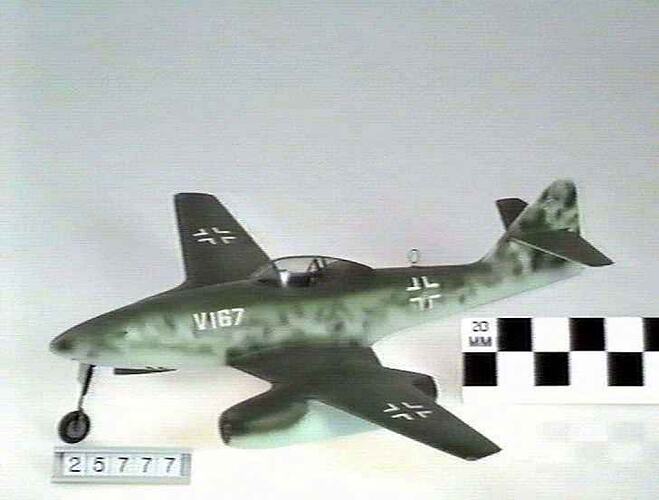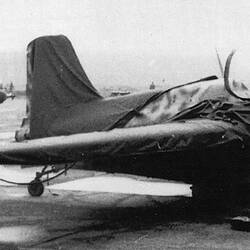Designed in 1938-40 by Dr Waldemar Voight, the Me 262 combined a revolutionary swept wing and twin jet engines. Messerschmitt A.G were a well established German aircraft company best known for their Bf 109 and Bf 110 fighters. In March 1940, the company was contracted to build four Me 262 jet fighter prototypes using the BWM 003 engine. Ongoing problems with this engine led to a protracted development process and a change to the Junkers Jumo 004 jet engine in 1942. A production order for 100 aircraft was issued in May 1943. By this time the German Luftwaffe was on the defensive with the outdated Bf 109 still in production. The single seat Me 262 was capable of speeds in excess of 500 mph and represented a clear technological advantage. Instead of representing a real threat to the Allied air forces, the impact of the Me 262 was partly blunted by Hitler's technical ignorance when he ordered it be used as a bomber in May 1944. When operated in this role, the aircraft was forced to fly lower and slower and lost its speed and climb advantage.
The first combat use of the Me 262 was in July 1944 becoming the world's first operational jet aircraft. Continuing technical problems, materials shortages and the need to disperse production and operational airfields to avoid bombing raids meant that there were rarely more than about 200 Me 262 aircraft available for combat duties at any one time before Germany surrendered in May 1945. A two-seat Me 262B trainer/night fighter version was also produced. One example of the Me 262 was brought to Australia for the Australian War Memorial collection. This is a Me 262A-2a version with the werk number 500200. In recent years a number of replica Me 262 aircraft with modern jet engines have been built in the United States.
More Information
-
Keywords
-
Authors
-
Article types



